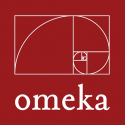In November 2015, I represented the Omeka team at IMLS’s Focus conference held in New Orleans to share the latest developments in the Omeka software family.
Below are my slides, and the notes from my talk.
I am here representing the Omeka team at the Roy Rosenzweig Center for History and New Media, and we are ever grateful to IMLS who has funded Omeka, from its earliest manifestation in 2007.
I’d like to take you on a brief journey showing you where Omeka started and where we are going related to collections data interoperability and our aspirations for offering GLAMs a way of onboarding to the Linked Open Data landscape.
In the early 00’s, we learned from collaborating with many cultural heritage institutions that there was a need for an easy-to-use, collections-based system that was free and open source, that also adhered to international metadata standards, while also offering organizations the opportunity to build an appealing front-end design that didn’t replicate the look of a database.
We found that we kept building the same type of relational database backend over and over, and decided to generalize it into what is now Omeka.
One of the most important guiding principles, that we are discussing today, is for the data to be portable and accessible in multiple ways.

